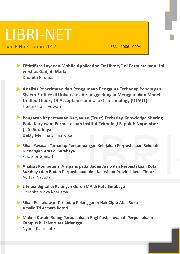Pediomaternal Nursing Journal
ISSN 2355-1577
Vol. 3 / No. 1 / Published : 2014-10
Order : 11, and page :92 - 101
Related with : Scholar Yahoo! Bing
Original Article :
Analisis faktor kejadian berat bayi lahir rendah (bblr)
Author :
- Ratna Yulita*1
- Esti Yunitasari*2
- Nuzul Qur'aniati*3
- Mahasiswa Fakultas Keperawatan
- Dosen Fakultas Keperawatan
- Dosen Fakultas Keperawatan
Abstract :
Low birth weight (LBW) is still a major cause of infant mortality in Indonesia. The risk factors related to low birth weight include mother’s age, parity, birth interval, history of LBW, employment, education and family income. Prevalence of LBW in Magetan city is about 4,03%, this value is still high as a cause of infant mortality. This study aimed to determine factors that relate to the incidence of low birth weigh (LBW) in dr. Sayidiman’s Hospital, Magetan. This study uses descriptive analitic study with cross sectional approach. The population was all of mothers who gave birth during the period of June 2014. Total sampel was 40 respondents, taken according to inclusion criteria. The independent variabels were mother’s age, parity, birth interval, history of LBW, employment, education and family income. The dependent variable was baby’s birth weight. Data were collected using medical records of patients and questionnaire. Data were then analyzed using Chi Square and Spearman’s Rho test. Results showed that factors correlated the incidence of LBW was mother’s age (p=0,024), parity (p=0,045), birth interval (p=0,039), history of LBW (p=0,038), employment (p=0,031), education (p=0,041) and family income (p=0,028). The study conclude that mother’s age, parity, birth interval, history of LBW, employment, education and family income correlated with incidence of low birth weight. From this study was expected to improve hospital’s program antenatal care (ANC) to reduce the incidence of LBW
Keyword :
birth interval, low birth weight, parity,
References :
Suradi, R,(2005) Termoregulasi Pada Bayi Prematur Bandung : Kongres Perinansia
Archive Article
| Cover Media | Content |
|---|---|
 Volume : 3 / No. : 1 / Pub. : 2014-10 |
|












